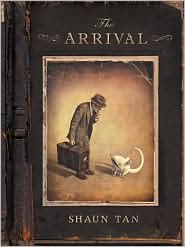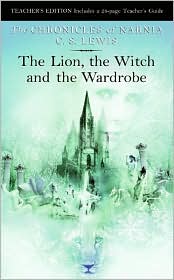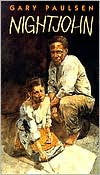 BIBLIOGRAPHY
BIBLIOGRAPHYTan, Shaun. 2006. The Arrival. NY: Arthur A. Levine Books/Scholastics Inc. ISBN: 0439895294
BOOK REVIEW
Leaving his wife and daughter behind in a bleak city that is haunted by large dragon-like creatures, a man journeys to a new world in search of a better life for his family. After going through the new city’s port that is reminiscent of New York’s Ellis Island, the traveler enters the new city that has a different language, food, architecture, technology and even different type of pets. The readers will follow him as he slowly learns to adapt to the customs of his new home and meet fellow immigrants and hear of their haunting stories of their old life. In this beautifully illustrated graphic novel, Tan tells this engaging story through his monochromatic pencil-drawn illustrations, which resemble sepia-tone photographs and are presented in square panels four six to twelve per page, which captures the deep emotions of our protagonist, and in double-page spread that exhibits the great and innovative cityscape with its hot air balloon transportation, mailboxes that will fly away once you deposit your letter, and much more. Readers of all ages will enjoy the engaging illustrations while older readers will understand story and emotions that evokes the memories and feelings of the thousands of people who have immigrated to a land in hope of a better life and who have found the welcoming warmth of those who have come them.
CONNECTIONS
*Have the readers discuss how the story parallels the stories of immigrations, e.g. the Irish immigration to America during the Great Potato Famine in 1848-1852.






